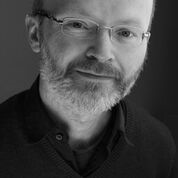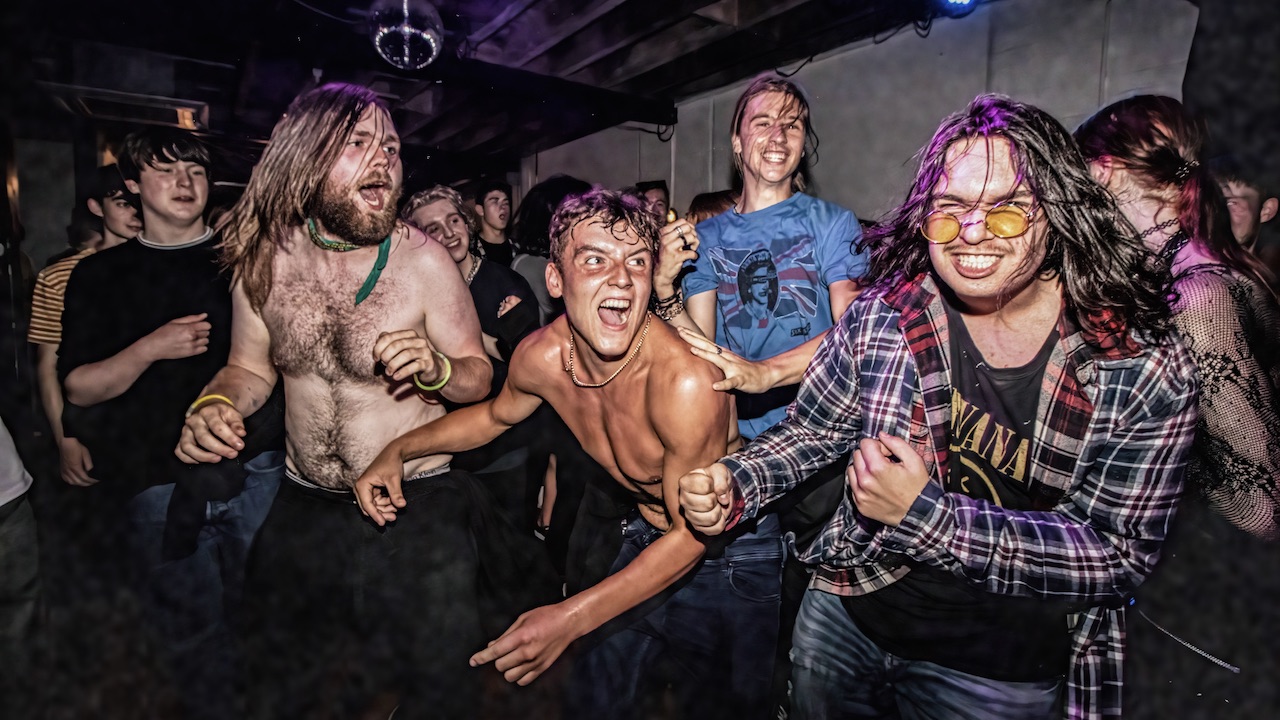The Vinyl Issue: Peter Hammill
Riots, UFOs and heart attacks: Peter Hammill recalls life in Van der Graaf Generator, and explains why he re-formed the band while continuing his own restless, experimental solo career.
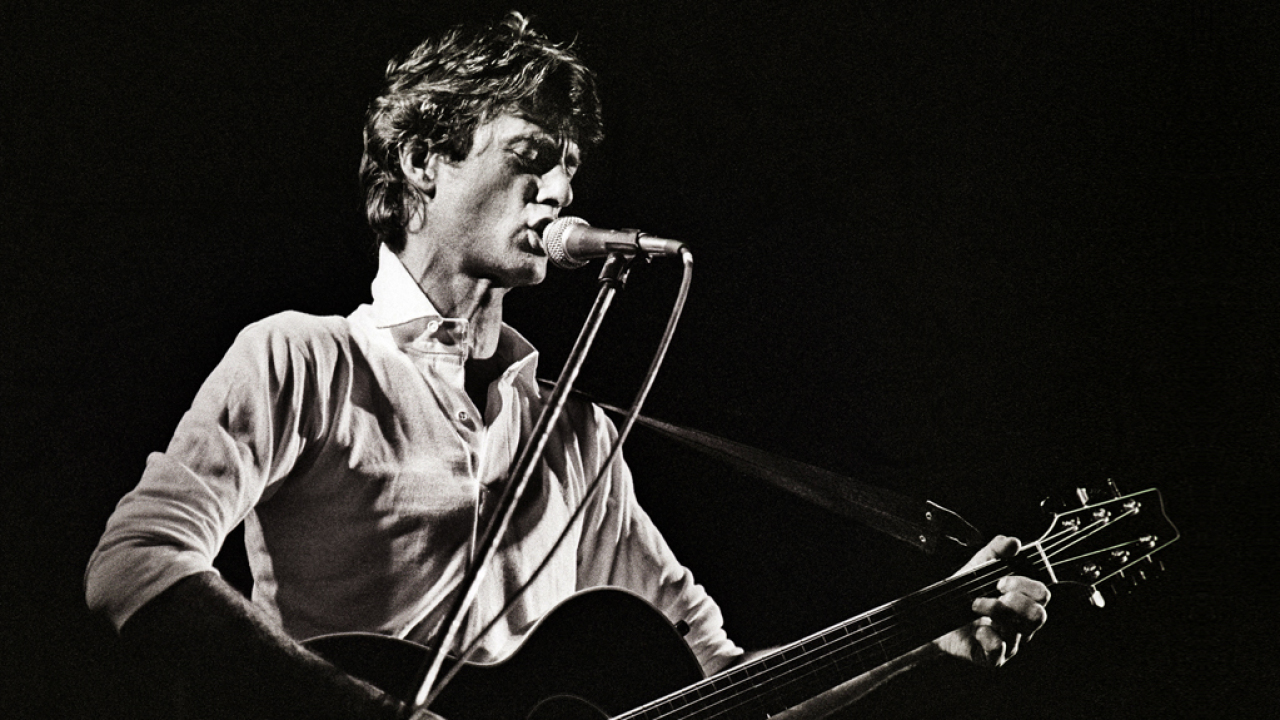
We’re in Padua, Italy, in 1975, and Van der Graaf Generator are starting to grasp that they’ve finally gone too far out and may not make it back alive.
Five thousand of the fans who took the band’s majestically ferocious, beyond-prog album Pawn Hearts to No.1 in Italy are roaring with approval. But up in the rafters of the abandoned factory where they’re playing, hooded intruders are throwing metal bolts and bricks down on the band. Blinded by stage lights, the musicians can’t see the potentially fatal missiles until they smash onto their instruments. Their assailants might be fascists or communists. The band continue playing extreme music that seems built to deal with such forces. They’ve been heading towards a crash like this for a while.
“There were a load of people coming through the backstage area with hoods on and brandishing bars,” Van der Graaf’s drummer Guy Evans remembers.
Thirty years on, we’re sitting in a rooftop bar in Rome, the just-reformed band having returned to Italy. “We went off stage because they seemed to be getting close. We went back on again. And then things started to land on stage. Scaffolding clamps. I was very fearful because if one had hit me it would have killed me.”
“I was at the front of the stage, I couldn’t see what Guy could,” Peter Hammill, the band’s singer, recalls. “I wasn’t in fear of my life. We got back to the ten-ton tour truck that was our dressing room, and the driver went straight through the side of the building, which was made of plate glass. Obviously that was the end of the show. It was much more scary in retrospect. At the time, it was all just part of the movie.”
When the tour bus careened into Genoa ready for the next gig, the gates were shut. So the driver rammed through those too.
This was the sort of movie Van der Graaf Generator were born to star in. Aggressive, jagged-edged rock symphonies such as Pawn Hearts’ 23-minute A Plague of Lighthouse Keepers breathed more combustible air than most of the prog-rockers seen as their peers. Hammill, “the Hendrix of the voice”, was the lightning-charged singer-songwriter at their core. When Johnny Rotten played his favourite music on Tommy Vance’s Capitol Radio show in 1977, he picked two tracks from Nadir’s Big Chance, Hammill’s 1975 glam-punk journey through a music biz ripe for burning. “A true original,” Rotten enthused. “I love all his stuff.”
Sign up below to get the latest from Classic Rock, plus exclusive special offers, direct to your inbox!
David Bowie, Nick Cave and The Fall’s Mark E Smith love it too. But this music was made at a price. “We were fuelling this intensity engine,” Evans believed. And periodically the engine blew.
During Van der Graaf’s 70s pomp, a saga with bizarre episodes ranging from a kidnapped truck to an Ibiza gig accompanied by near-drownings and a UFO fly-by, members regularly fled, shattered. In 1978 the band split, seemingly for good.
Hammill retreated to the West Country, exiling himself from a music business which gradually forgot him. His almost secret solo career became a cottage industry, sustained by a devoted cult following. A prog icon who kept progressing, he worried away at lofty themes of fated lives and human fallibility, over ever-shifting, often stark, sometimes beautiful music. He also raised a family in Bradford-on-Avon’s peaceful backwater.
A heart attack in 2003 barely delayed Van der Graaf’s 2004 resurrection. In 2015 the 66-year-old is back with a typically ambitious three-CD box set, and a VdGG double live album.
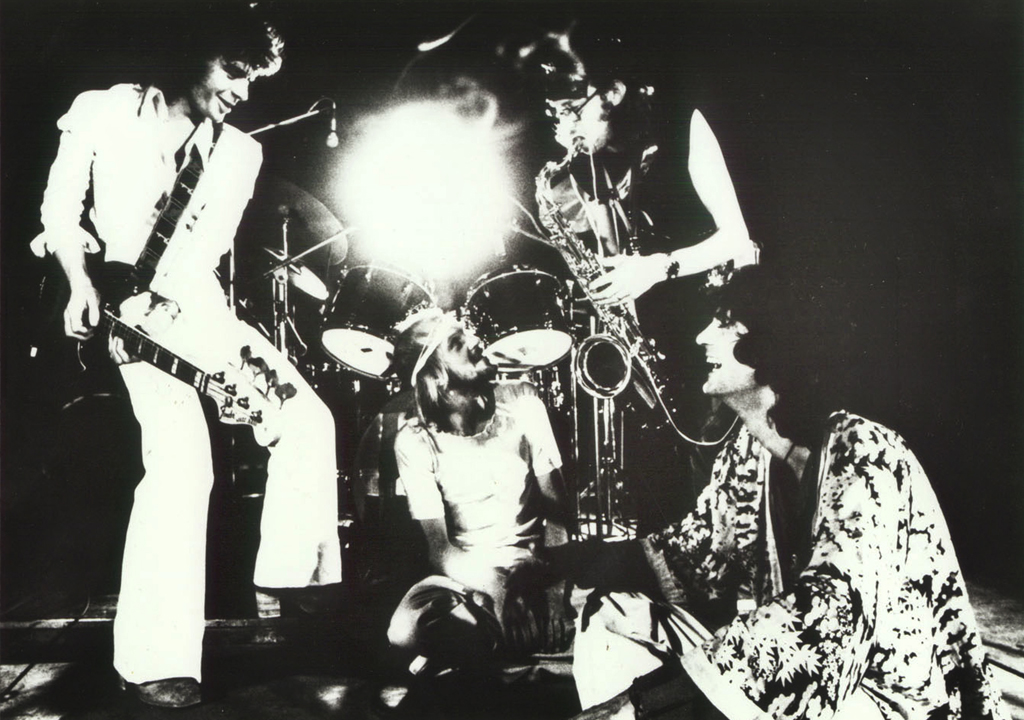
We meet up with Hammill – white-haired and still suiting his Thin Man nickname – in a West End pub. He’s in the UK for a couple of hours. He seems to run on a personal intensity engine, his fiercely alert enjoyment of life burning in every rapid word.
Born in Ealing, he had a rootless childhood, moving a dozen times. Teachers at his Jesuit school taught him to question everything. The Mod scene in Derby, where his parents moved to in 1960, made him a devotee of “British beat groups, R&B and soul”. With science-fiction and drugs added to the brew, he formed Van der Graaf Generator at Manchester University in 1967 with Chris Judge Smith. Smith soon stepped aside, and the core line-up of Hammill, drummer Evans, virtuoso of custom-built organs Hugh Banton and saxophonist David Jackson were together by 1969 (they’d already split up once).
Supporting Jimi Hendrix at the Albert Hall in February ’69 was another early touchstone. “In terms of what music can be,” Hammill remembers, “he was a strong influence on me and Hugh. I see Hendrix now as a bluesman, and elemental force. But it was such a different world then. The PA would be just a couple of speakers. It was a chaotic world. And a small one – Hendrix would play the Saville Theatre, not Wembley. It was becoming an industry around us in the seventies. And as it became an industry it became of interest to other people and attracted energies – and trouble.”
Those energies were at their most tumultuous in Italy. VdGG played their first gig there on February 8, 1972 in Milan, in the midst of petrol bombs and tear gas. Their last was two gigs after the Padua carnage in 1975, at Rome’s Palazzo dello Sport. The band survived unscathed, but woke up the next morning to find that their tour bus had been kidnapped by murky entities. Hammill turned up to a tense 5am stand-off at a car pound to negotiate its return. A police escort made sure they left Italy.
On the way home the singer, in pieces from the strain, found himself peering down at his own body. Back in England he split with his long-time partner, Alice, and wrote one of the bleakest break-up albums, Over.
Traumatic as all this sounds, it also seems thrilling that such wild forces once swirled around rock. “The game was to ride it,” Hammill reflects. “In terms of live experience, this was such a privilege. Because you’d go to Germany, and six months later it would be different. Because a lot of our touring was in the Baader-Meinhof era, and Brigada Rossa in Italy. This energy, and electric crackle, it wasn’t just about music, it was culture-wide.”
Does he still feel any of that crackle now?
“Ooh,” he says, going all West Country yokel. “I’m from Bradford-on-Avon now, me!”
Hammill’s most epic songs for Van der Graaf often involved heroic quests. Maybe he felt that he was on one then?
“Yeah, I think you’re right,” he considers. “Young bands are gangs on a mission. And that could be rampaging through life and leaving a trail of destruction behind you, or it can be forward to the distant temple. And I suspect we were more on that side than the rampaging.”
Did it sometimes seem like you were really getting somewhere on that crazed 70s odyssey – that whatever you were after was so close you could touch it?
“Very fleetingly, occasionally, yes,” he says, laughing. “And then one of us or something would blow up. We were always a bit of a spluttering machine. We probably still are. But then, it wasn’t a glorious quest. Maybe a bit more of an idiosyncratic, English one – one of the smaller stories from The Knights Of The Round Table, rather than Sir Galahad or Gawain. An instructive moral tale.”
The moments when Van der Graaf almost achieved their mad ambitions were always live. “The version of playing live which started back in the seventies,” he says, “utterly laudable in terms of being good to the audience, is to make sure the show is a hundred per cent professional, and every stage move and light move is perfect. And our attitude still is: Well, we’ll get it close, and then we’ll rely on the magic and the glory. And if you haven’t had that experience on the stage, then you can’t know what it’s like. Because there, time is subjective, and you might not even be in accord with the rest of the musicians as to what happened. So the glory is there, but you don’t know if it’s actually real.”
Van der Graaf Generator somehow continued until 1978, in radically reconstituted line-ups.
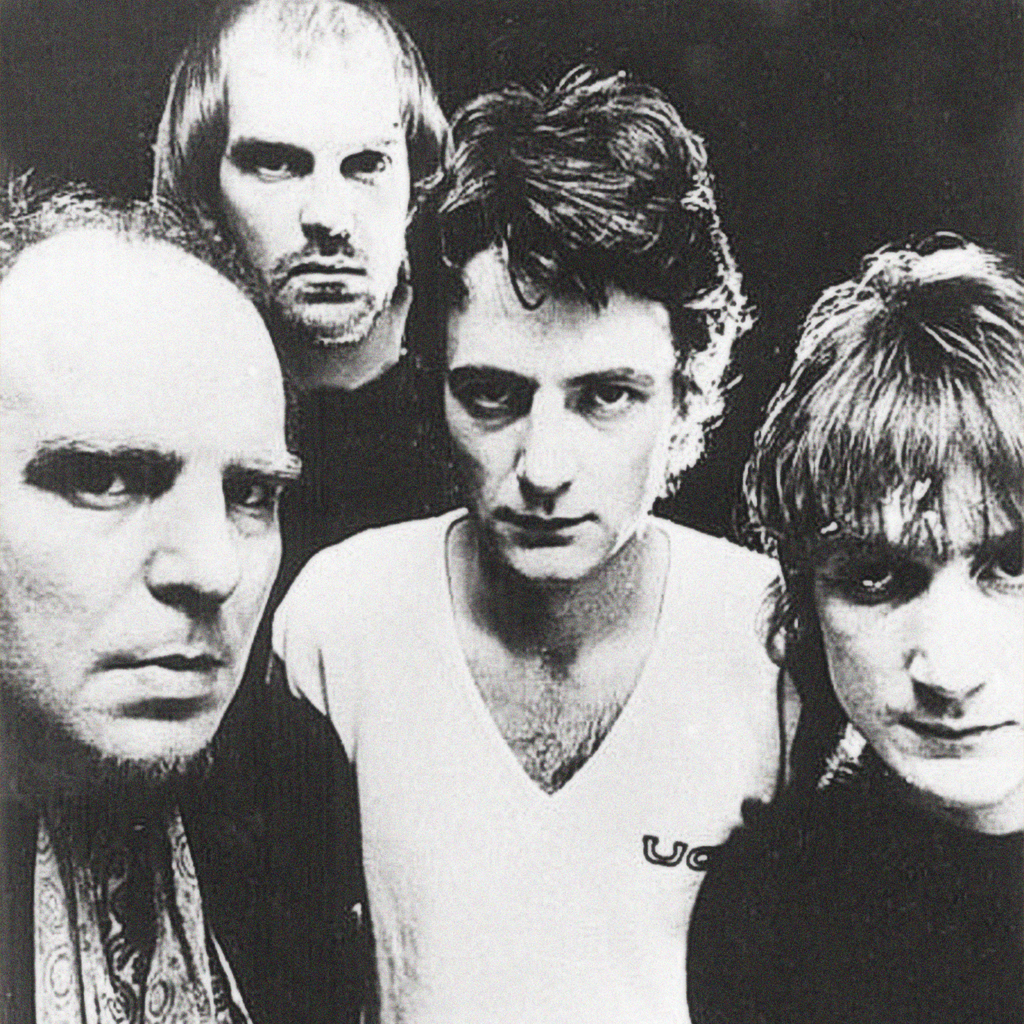
In that Rome restaurant in 2005, Guy Evans, the only other VdGG constant, transfixed me with tales of his nightmarish time in 1977: during four days in Ibiza, violinist Graham Smith and Evans’s daughter both almost drowned; Nic Potter’s bass turned itself up to shocking levels at a gig watched by black-clothed, witch-like local women; Evans and dozens of others saw UFOs in the sky. With the psychic temperature at such a pitch, it sounds like someone might really have died if the band had carried on.
“I don’t think anyone would have died,” Hammill considers. “I would say ‘cracked up’ rather than died. I put it in a box afterwards, because it did get very extreme. And part of it was to do with having that level of success when one’s a magnet for trouble. That might be significant in terms of my attitude to success and my drive for it since, that I hadn’t wanted to be so successful that I’m a magnet for trouble – any kind. So I went away and shut the box on it, and I was into a solo career. I didn’t consider it again until I went back to Italy solo, supporting Peter Tosh.
“I wanted to go because I love Italy. The tour with Peter Tosh was even more filmic, but a bit more Italian Job than with Van der Graaf. All due respects to [Tosh’s rhythm section] Sly and Robbie for playing through the tear gas.”
Hammill’s first solo album released after the split, _The Future Now _(1978), was a spirited return to the fray. He was still on Charisma Records then, but by 1992 had his own label, Fie! The work continued – band and solo, he’s past a half-century of albums now. Any new, manic dramas stayed private. That is until he fell down in the street in December 2003. “I was blacking out,” he told me, of the heart attack that almost finished him. “When paramedics start calling you by the wrong name, and you realise they’re doing that so that I will bloody well stay awake to tell them, ‘No, it’s Peter.’ That’s… the bit.”
His “sense of immortality” has since returned, he tells me now. “I’m not a fully functioning human being, because I’m sixty-six, so stuff is going wonky. But it’s not going wonky in that [claps hands] electric jolt way.”
Two of his strongest albums followed. Singularity (2006) dealt with the heart attack directly. Thin Air (2009) was more truly spooked, full of quietly apocalyptic songs, as the ice cracks under its protagonists’ feet.
“Singularity was a visceral response: ‘This is what has happened to me, this is what it feels like,’” he considers. “And then maybe that opened the door to that atmosphere. Thin Air also refers back to 9⁄11. Because after a Van der Graaf show Guy and I sat on the viewing platform at the World Trade Center, and we got – so seventies – the computer-printed portraits of the two of us there. In terms of the tragic nature of events, and all the stuff that’s rolled out since, it’s ludicrous. But one of my first feelings on seeing the planes hit is that Guy and I were standing there. We were there, in what’s now thin air. And I can still see it, and recall it. How does that happen? How does that work?
“And, oddly, it’s not just that. In terms of Van der Graaf, we’re three entirely different people and we’ve missed out on lots of each other’s lives, with thin air between us. And yet we’re still here.”
Van der Graaf Generator first re-formed for the encore of a Hammill gig in 2003. Their official reunion, on May 6, 2005 at London’s Royal Festival Hall, was a triumph attended by fans from 27 countries, and was later released as the live album Real Time (2007). Present (2005) announced their studio comeback. That summer I went on the road with them on their return to Italy. In Milan, Hammill seemed utterly transported as he sang, arms pinned to his sides by the force of the music, voice vaulting forth. In Rome he hid behind a pillar in his hotel as fans milled around the lobby, hoping to glimpse him. At a tennis arena that evening the ecstatic audience begged for another encore. But by the end of the year the triumph had soured, and Jackson, always a vital, charismatic presence for them live, was out. Banton and Evans refused to work with a man they found much changed. Hammill tenses as he remembers this personally painful crisis.
“We thought that we’d done fantastically well,” he says. “Creatively, socially, in terms of the way it was handled and the reactions, the whole period from 2004 to 05 had been fantastic. And now we didn’t know if there was going to be an ‘us’. And when we met in January 2006 we spent the first three-quarters of an hour bitching.
“Retrospectively I have no regrets. We absolutely would not have made as many records, done as many tours, remained as creatively fulfilled, had it remained a four-piece.”
The new live album, Merlin Atmos, played by an unlikely, reduced rock trio of piano, organ and drums, finds Van der Graaf still questing for something way beyond themselves. For that reason, an epic version of Childlike Faith In Childhood’s End is especially, deeply moving.
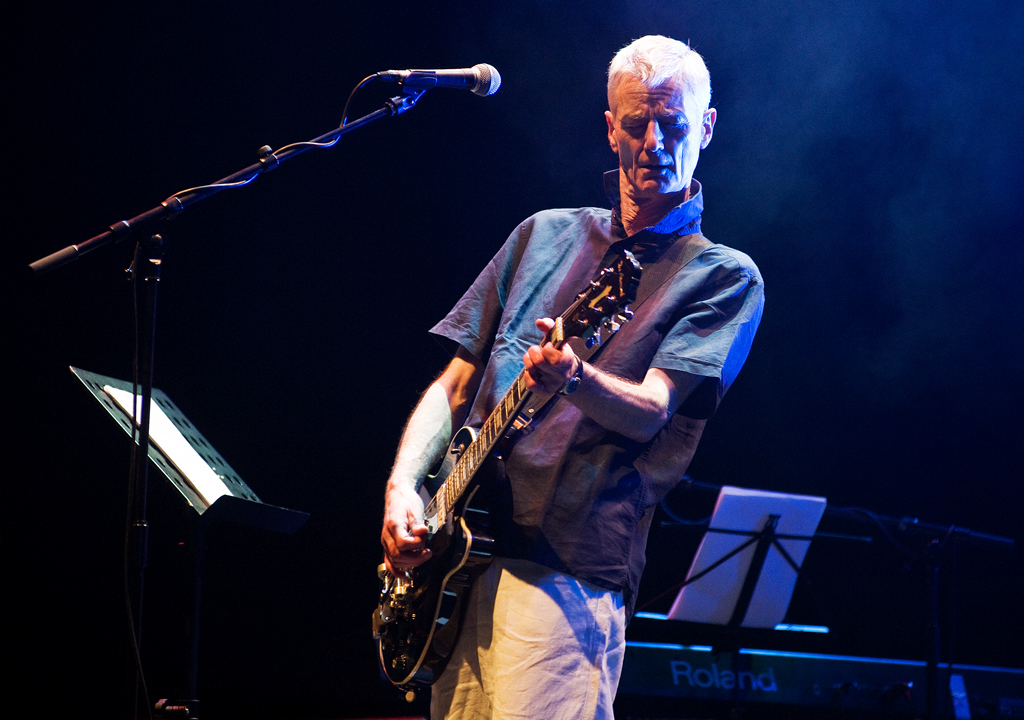
Hammill’s new solo album, …All That Might Have Been…, is yet another ambitious departure. A three-CD box-set, it includes an instrumental version, and one of straight songs. Hammill’s preferred take on this music is a non-stop, cinematic flow, in which lyrics about bad choices and wrong turns loom out of an atmospheric, film-noir fog of crushed beats, synths and harsh guitars. The words were worked up from notebooks, going back to 1974.
“A lot of it is road stuff,” Hammill explains. “Some of which were moments of extreme stress. There isn’t anything here about the Van der Graaf truck being held for ransom, but that would be the blockbuster, widescreen version. You think you’re just doing a show, and suddenly you’re involved in an entirely different movie. This is more catching a glimpse of yourself in the mirror on the far side of a bar, with just this intimation that something has gone slightly wonky, and you’re not sure what it is, or how you ended up here, and particularly how you’re going to get out of it.
“I watched the film The American Friend [with Dennis Hopper as the manipulative, murderous Ripley] again, and that seemed in-the-pocket for this. In it, the guy ends up being disrespectful to Ripley in the most anodyne way. I believe he just says: ‘I’ve heard of you’ at a party. Then Ripley takes it the wrong way…”
The quiet life in Bradford-on-Avon mostly keeps Hammill out of such scrapes these days. The retreat from the music business which has ended here wasn’t, he insists, a reaction to Van der Graaf’s various catastrophes. “I’ve been like that for ever,” he says. “I’ve always been keen on the ordinary life being quite apart from whatever life ‘Peter Hammill’ lives. If I’d just lived the Peter Hammill life I wouldn’t have any material. The writing always happens in that Bradford-on-Avon world of safety. But then, maybe that safety allows me to go and do writing that’s… not really dangerous, but more scary.”
Do Bradford-on-Avon’s laid-back Wiltshire rhythms insulate him, perhaps, from the burning, obsessive energy that still powers his music? Can he leave all that in the home studio he now has, and pop out for a cup of tea?
“Well, simply the fact that the studio is separate from the house, and there are two doors,” he agrees. “And while I may be thinking about things when I’m in the house, I’m not involved in that obsessive work. So yes, it is insulated, and they’re kept in separate rooms. And in terms of me continuing to function normally, I think that is important.
“Obviously, in terms of a life, the family has been the more important part. Whatever I’ve done, I’ve done to the best of my abilities, but I’ve lived my life, and I visit Peter Hammill. Although when I’m in my family life he taps me on the shoulder occasionally.”
Hammill remains revered in some of the most unlikely places. In Italy, where an enduring adoration of Van der Graaf meant Present hit the Top 40, he is still some kind of star. He has been on one of rock’s most jaw-droppingly dramatic journeys, and survived. But is ‘self-exile’ a fair term for where we leave him?
“I think so. I think increasingly. Obviously at a certain point I went: ‘Well, I don’t really care about a conventional career pattern. Or conventional success. I want to have enough success to be able to continue. But I don’t care about that normal way of doing it.’ I can say retrospectively that that has been a guiding principle behind all of the stuff that I’ve done throughout the years. And I’m now at the stage where that’s the case in spades.
“This new album isn’t part of a coherent career. You are supposed to reach people, and you’re not going to do that with an album’s worth of jump-cutting noir. That is not a conventional path. And I am therefore exiled. And I simply don’t know what’s going to happen next.”
…All That Might Have Been… by Peter Hammill is out now on Fie! Merlin Atmos by VdGG is out now on Esoteric Antenna.
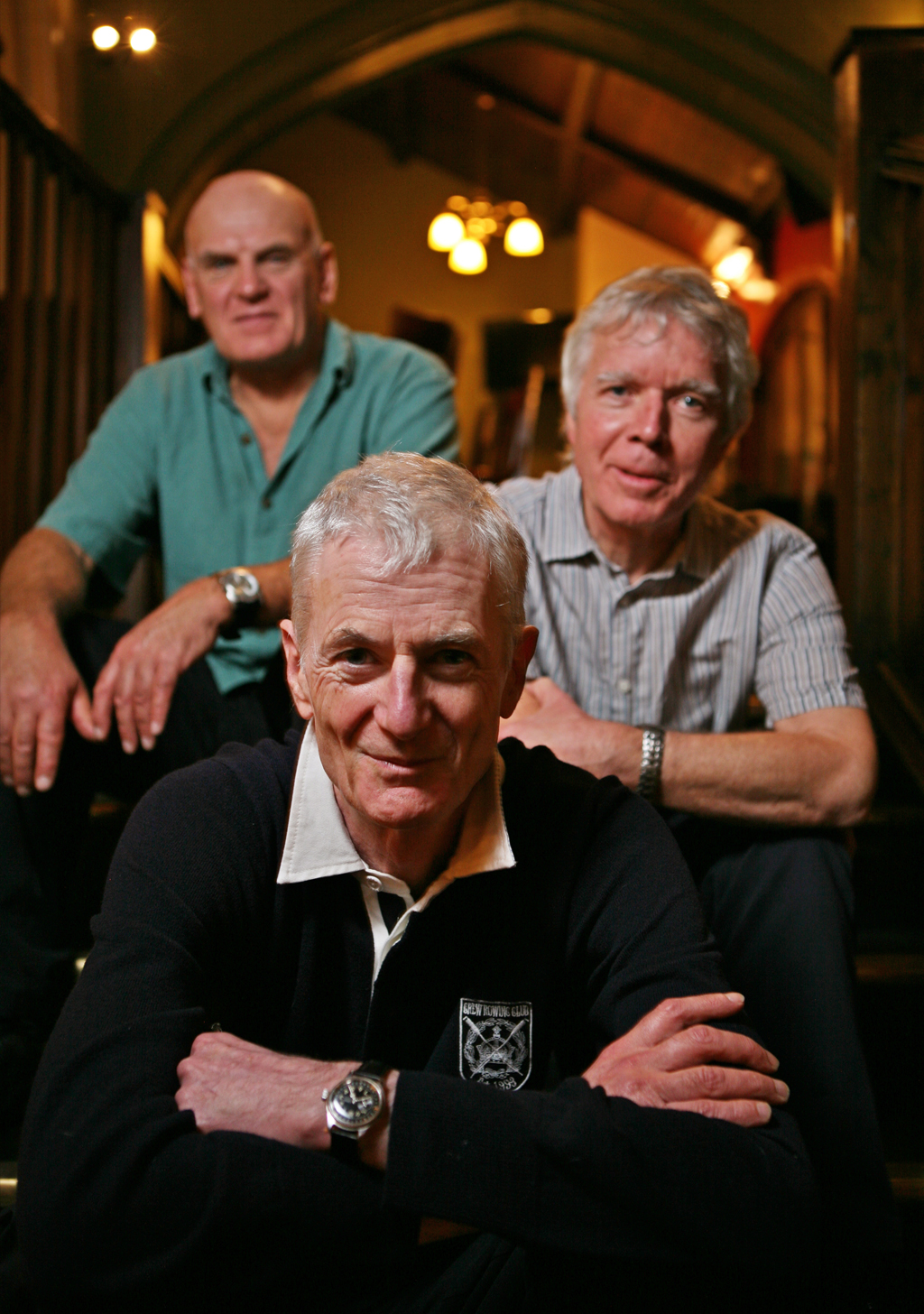
For Pete’s Sake
Ten essential Hammill tracks.
Refugees
Organ and flute set the scene for Van der Graaf’s uncharacteristically pastoral, yearning sci-fi saga of escape to a youthful utopia. The hippie dream still lives in its final, triumphant fanfares.
A Plague Of Lighthouse Keepers
Making 1971’s Pawn Hearts album was so intense that VdGG split soon afterwards. A Plague Of Lighthouse Keepers filled Side Two. Passages of melting beauty emerge from crashing, chaotic waves in a mad prog peak.
Theme One
The band supplemented Pawn Hearts with this deliberately contrasting 45. George Martin’s Radio 1 theme song has its addictive riff pumped up for a series of storming, sky-rocket climaxes.
Open Your Eyes
Johnny Rotten’s favourite Hammill album, 1975’s_ Nadir’s Big Chance_ included punk-prefiguring rock. This is a hoarse-voiced, hazy flashback to the singer’s soul-boy youth, full of swaggering keyboards and sax.
Childlike Faith In Childhood’s End
VdGG’s return in 1976 offered a new Hammill epic that rides Banton’s surging organ riffs even further out than Lighthouse Keepers, leaving him roaring defiance at the edge of the cosmos.
The Future Now
Hammill launched his solo career proper in 1978 with an album of punchy, punk-influenced protest, not least on this anthemic title track, which impatiently demands a better world.
Bareknuckle Trade
In 2002, deep into his prolific solo career, Hammill nails one of his enduring themes: that our bruising lives aren’t ours to control, but if we keep striving we have a puncher’s chance of making them worthwhile.
Every Bloody Emperor
Released in 2007, Present was Van der Graaf Generator’s first LP for 27 years. It began with this rollicking, Blair-and-Bush-inspired assault on delusional leaders determined to make us ‘serfs and slaves’.
The Top Of The World Club
Hammill’s 2009 album Thin Air was haunted by 9⁄11 and his 2003 heart attack. It comes to a head on this eerie memory of a visit to the World Trade Center in New York.
All The Tiredness
As he entered his sixties, Hammill again went where most rock musicians fear to tread: by describing their elderly exhaustion. ‘I made it through the shows/Something got left behind, a debt I owe…’
Nick Hasted writes about film, music, books and comics for Classic Rock, The Independent, Uncut, Jazzwise and The Arts Desk. He has published three books: The Dark Story of Eminem (2002), You Really Got Me: The Story of The Kinks (2011), and Jack White: How He Built An Empire From The Blues (2016).
